The Significance Of These Easter Foods
Easter 2020 is nearly upon us (Good Friday is 10 April and Easter Sunday is 12 April, btw), so it's time to start thinking about all your favourite Easter foods. There's eggs, Simnel cake and roast lamb, to name but a few. But do you know the significance behind these Easter foods?
If not, you'll be glad to hear that we've done the hard work for you and gathered all that information together for you.
And if you do know, erm, pretend you don't and learn it all over again, yeah?
Eggs
Eggs are one of the most recognised Easter foods around. There are a few different reasons for all the egg chat at this specific time of year. Firstly, eggs signify new life, which is what Easter and spring are all about.
Plus, Christians use the egg as a symbol of the resurrection of Jesus Christ. The hard shell of an egg symbolises the tomb in which Jesus was kept, and the chick inside represents Jesus himself.
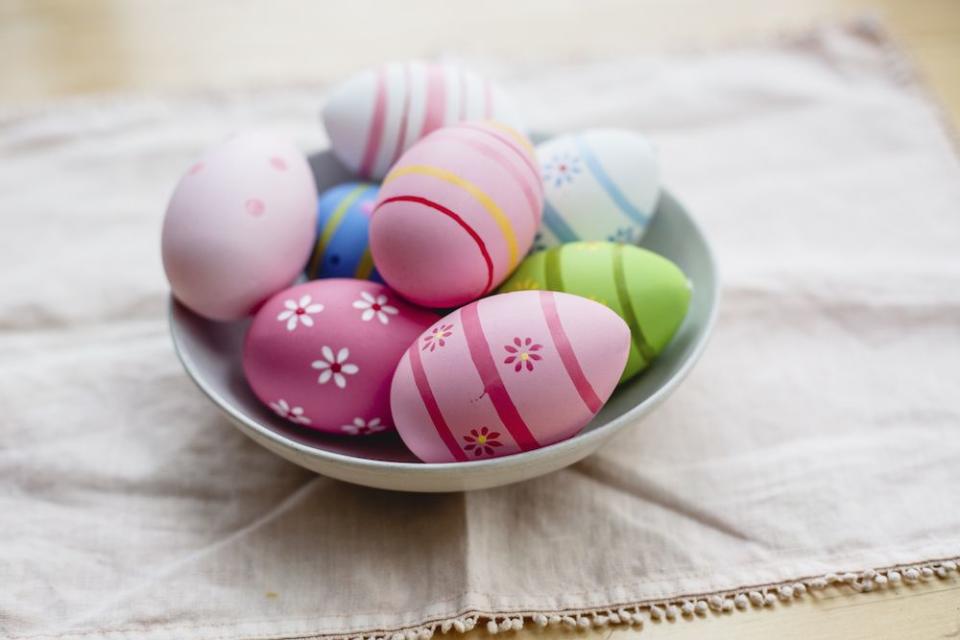
Then there’s the tradition of eggs being linked to Lent. Six weeks before Easter (aka Lent) is when Christians abstain from eating animal products such as meat, eggs and dairy. So by the time Easter comes around, people are keen to get stuck in again.
As you'll already know, it's common for eggs to be decorated and given as gifts; regularly being painted red to symbolise the blood of Jesus Christ when he was crucified.
Chocolate Easter Eggs
During the 18th century, people started giving Papier-mâché eggs filled with little gifts instead of the traditional painted eggs, then eventually chocolate eggs became a thing in the 19th century. But the first ones were made of bitter dark chocolate and were solid and hard. It was only in 1873 when JS Fry & Son joined forces with Cadbury that an Easter egg, as we know it today, was launched.
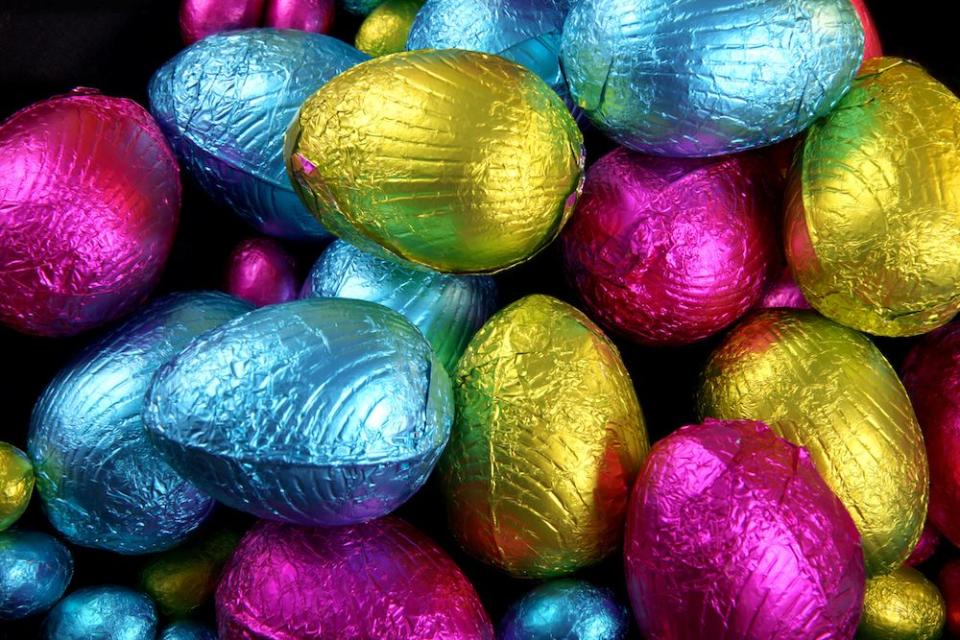
Hot Cross Buns
The eating of hot cross buns marks the end of Lent because they are made from dairy products, which are forbidden during this period.
The cross on the top symbolises the cross on which Jesus was crucified, and the spices in the bun signify the spices used to embalm him at his burial.
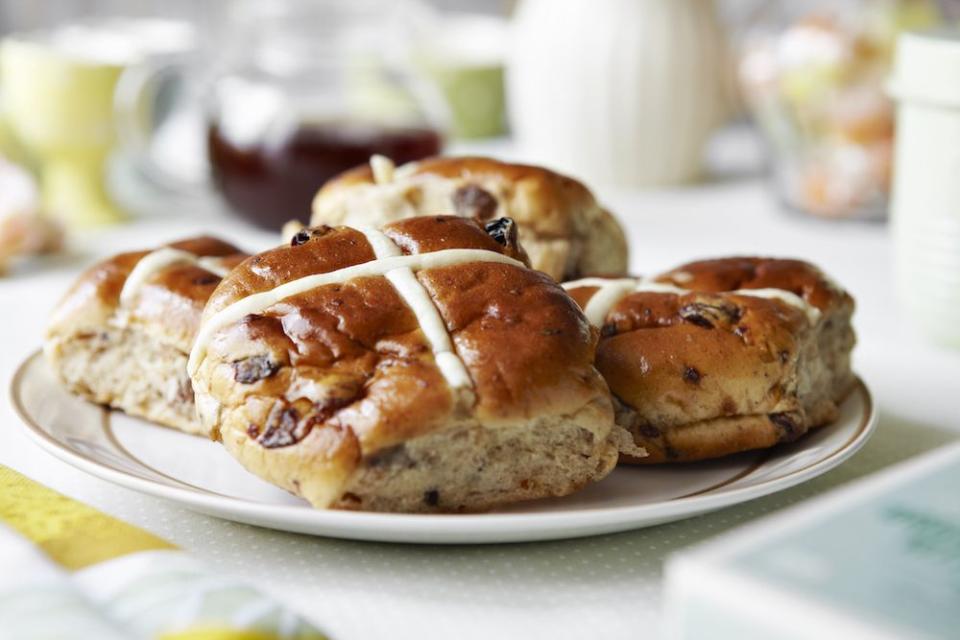
It used to be believed that hot cross buns baked on Good Friday would not go bad for a whole year, and if hung up in your kitchen, a hot cross bun would protect you from house fires, and it would ensure that all the bread baked in that kitchen would turn out perfectly.
Simnel Cake
A Simnel cake, which is a light fruit cake, is traditionally decorated with 11 marzipan balls to represent the apostles, with Judas left out because of his betrayal against Jesus, hence why they are eaten around Easter.

Roast Lamb
Often served on Easter Sunday, lamb is referenced in a number of Christian stories and has become linked with Easter due to the reference of Jesus being the sacrificial Lamb of God.
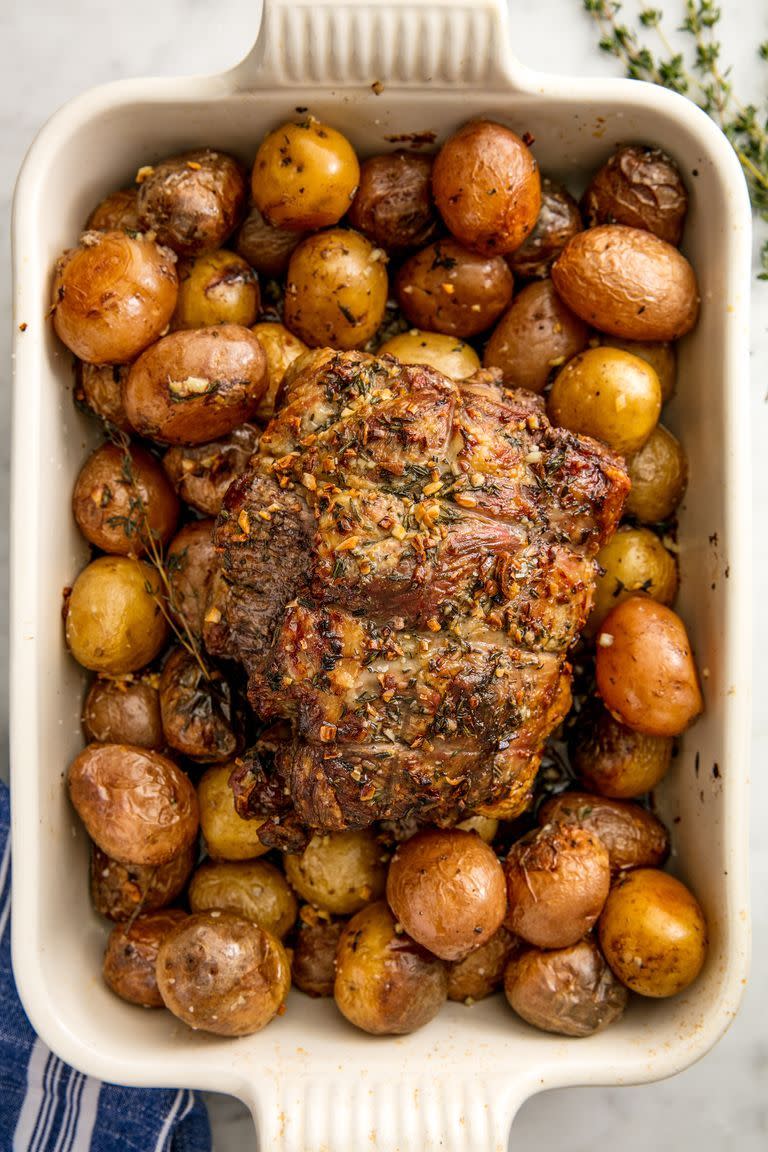
Roast lamb is also a popular choice in springtime, due to the fact that this is when lamb is at its best in the UK.
Italian Easter Bread
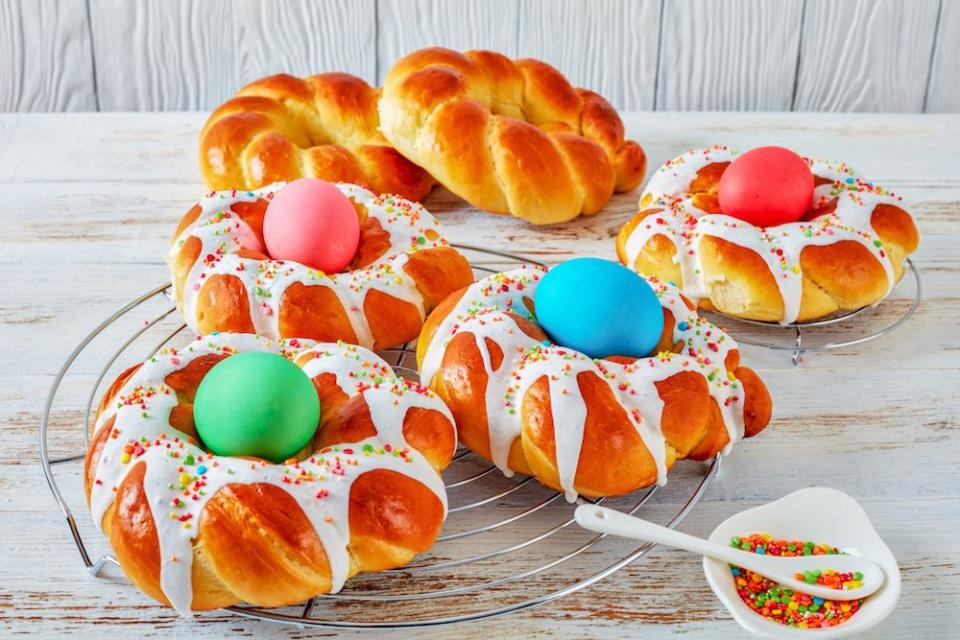
Italian Easter Bread is traditionally baked in the shape of a wreath to symbolise the crown of thorns worn by Jesus Christ at the crucifixion. The three pieces of dough braided together represent the three elements of the Holy Trinity: the Father, the Son and the Holy Ghost. The bread is either baked with coloured eggs directly in the dough or with white eggs that can be decorated after baking.
Colomba Pasquale (Dove Bread)
Originally from Lombardy in northern Italy, this panettone-like bread in the shape of a dove is studded with citrus peel and dried fruits, then topped with a coating of sugar-nut syrup and sprinkled with almonds and sugar.
The reason for the Colomba Pasquale's dove-like shape is that, apparently, after three long years of siege in 572 B.C, around Easter time, a local old baker offered a raging King Alboino a dove-shaped bread to calm him down; explaining that his tribute was a symbol of peace. The bread smelt and tasted so good, that the king made a promise of peace.
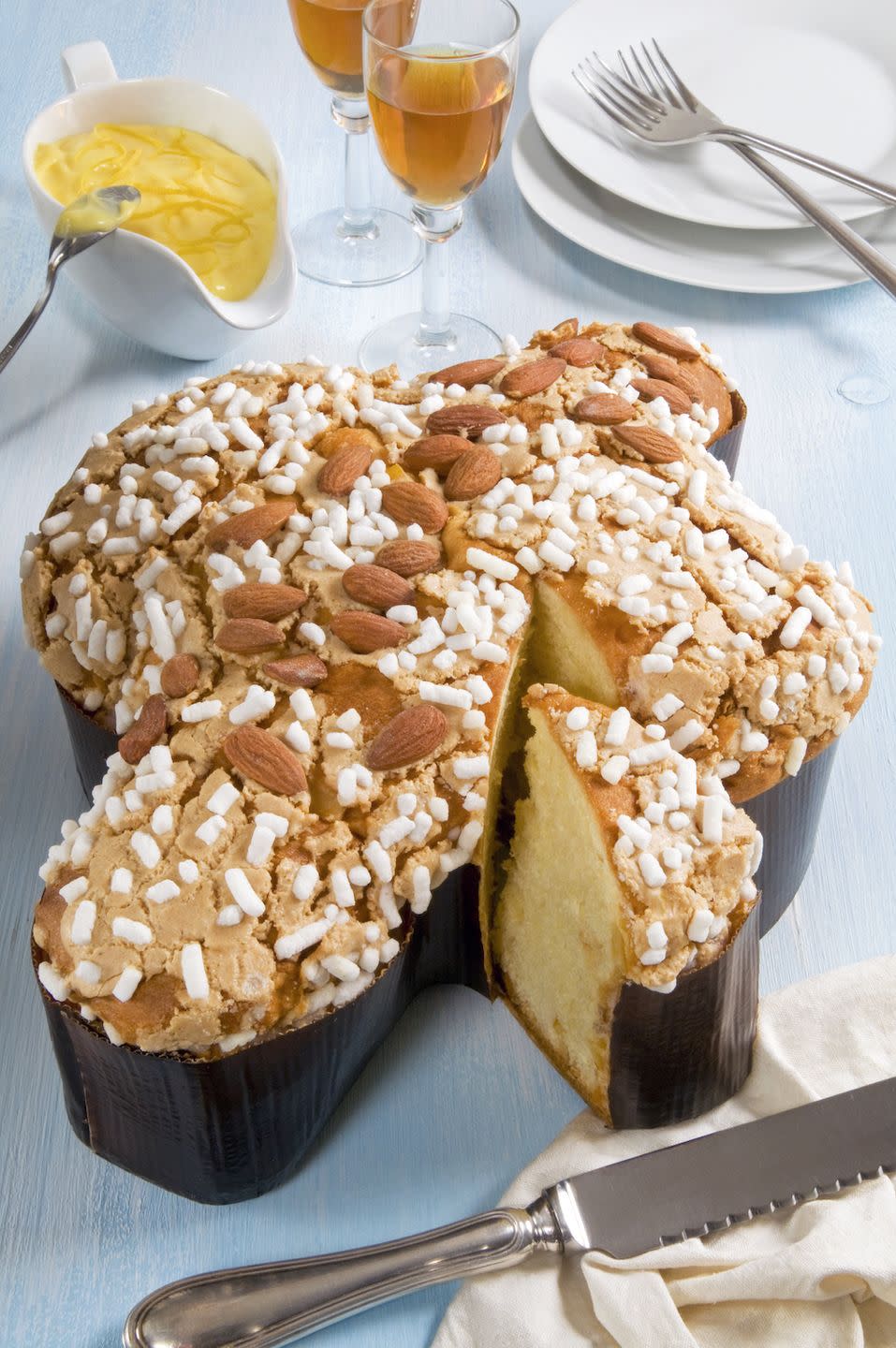
Pretzels
Legend has it that the pretzel was invented by an Italian monk in the year 610 A.D to reward young children for learning their prayers. Apparently, the monk folded strips of bread dough to resemble the crossed arms of praying children. He called his creation pretiola, which meant “little rewards."
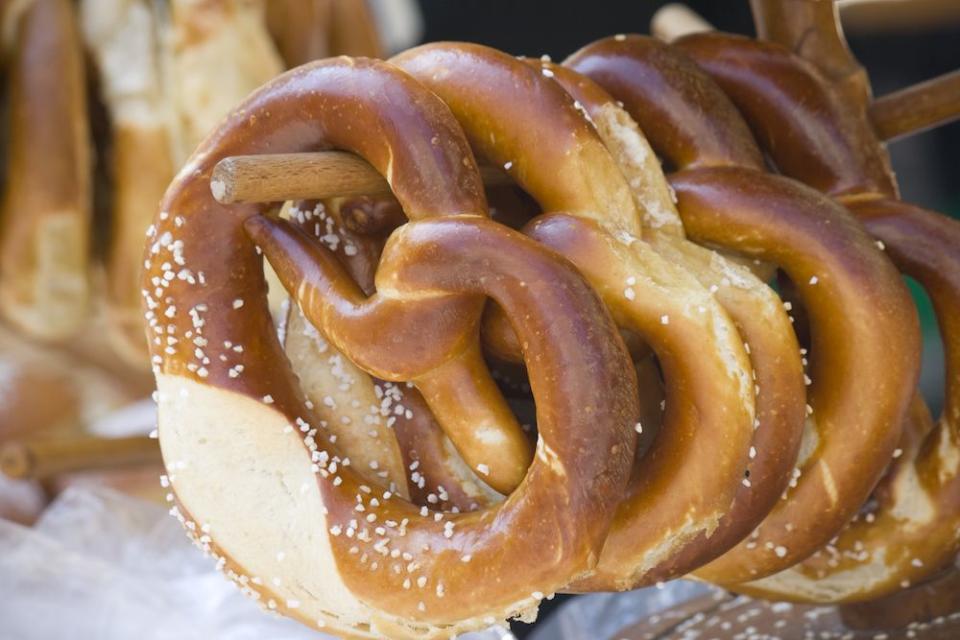
Pretzels are associated with Easter because, thanks to their simple ingredients, they can be eaten during Lent, when Christians are forbidden from eating certain foods.
Back in the day, pretzels were often use for Easter hunts instead of chocolate eggs.
Magiritsa Soup (Easter Sunday Soup)
Magiritsa is a Greek soup made from lamb offal, associated with the Easter tradition of the Greek Orthodox Church. Because of this, Greek-Britains of Greek-Americans sometimes call it 'Easter soup', 'Easter Sunday soup', or 'Easter lamb soup'.
The soup is eaten to break the fast of Lent, and is made from ingredients from a roast lamb Easter Sunday lunch. In its traditional form, Magiritsa is made from the offal removed from a lamb before roasting. Prepared on Holy Saturday along with the next day's lamb, Magiritsa is consumed immediately after the midnight Divine Liturgy.
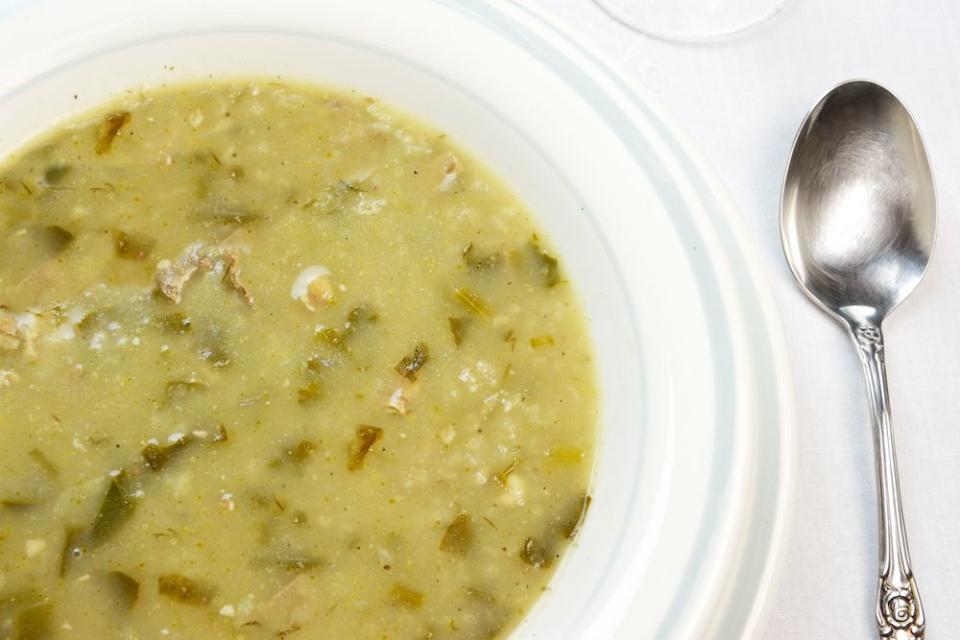
Capirotada
Capirotada is a Mexican bread pudding traditionally eaten around Easter time. The ingredients carry a rich symbolism to the Passion of Christ, and the dish is considered by many Mexican families as a reminder of the suffering of Jesus on Good Friday. The bread represents the Body of Christ, the syrup is his blood, the cloves are the nails of the cross, the whole cinnamon sticks are the wood of the cross, and the melted cheese represents the Holy Shroud.

Like this article? Sign up to our newsletter to get more articles like this delivered straight to your inbox.

 Yahoo News
Yahoo News 
